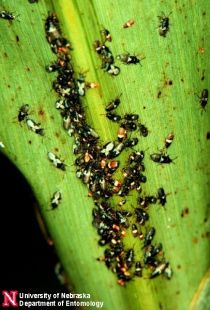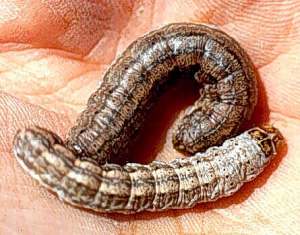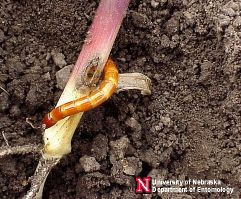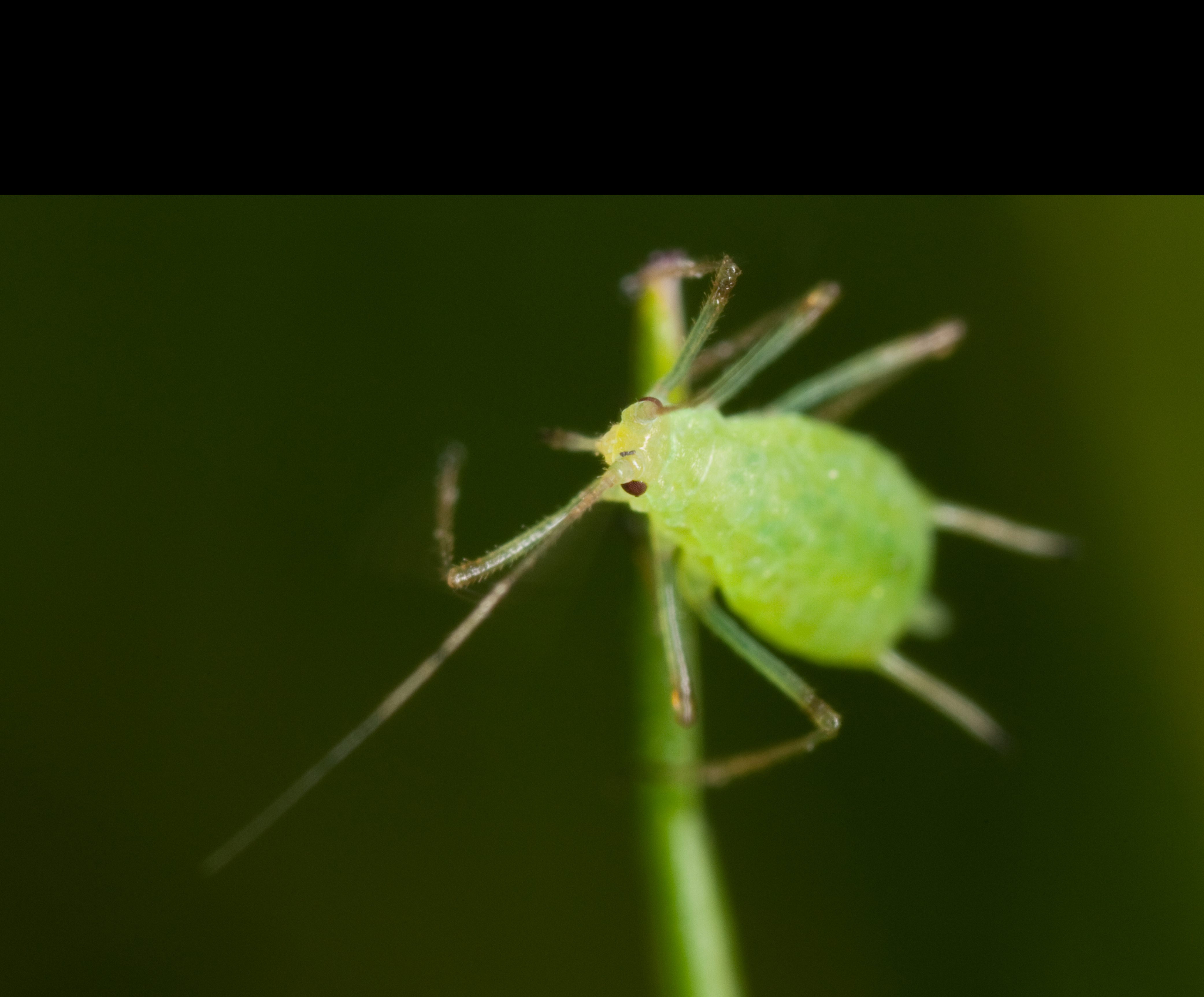Sorghum Insect Management Resources

Information on two of Nebraska's leading sorghum pests — chinch bugs and greenbugs — is found below. For more information on these and other insects in sorghum, check these Nebraska Extension resources:
- Insecticides for Field Crops, including current alfalfa pest management information from UNL Extension. (The guide is excerpted from Nebraska Extension's Guide for Weed, Disease and Insect Management in Nebraska.)
- Insect Almanac, a website of the UNL Department of Entomology.
- CropWatch News and the CropWatch News Archive: Use search to find articles on identifying and treating sorghum insects.
Sorghum Pests
Chinch Bugs

The chinch bug is a native North American insect that can destroy cultivated grass crops, especially sorghum and corn, and occasionally small grains, such as wheat and barley. Crop damage from this insect is most often found in southeast Nebraska and northeast Kansas and is associated with dry weather, especially in the spring and early summer months.
The chinch bug life cycle involves several crops. On sunny spring days when temperatures rise above 70°F for several consecutive days, adult chinch bugs will leave overwintering sites and fly to small grains, such as wheat (including volunteer wheat), barley, oats and rye, where they progress through several life stages.
After the wheat starts to ripen, chinch bugs move in large numbers to nearby corn or sorghum fields. Usually, most of the bugs will be in a non-winged immature stage and must walk to the nearby crop. Adults, however, may fly to the new field. Severe damage may occur to corn or sorghum if the migration and feeding continues. When chinch bugs occur in large numbers on corn and sorghum, the plants may be killed, particularly seedling plants less than 12 inches tall. Early feeding occurs at the crowns and below the soil surface on the roots and stems of small plants. Later, the bugs feed on aboveground stems behind the leaf sheaths.
During high infestations, the stems and lower leaves may be covered with nymphs and adults. Typical damage usually begins in the field margin near the infested small grains and progresses quickly, destroying many acres in a short time. Chinch bug damage has been observed in sorghum and corn fields that were over 1/2 mile away from wheat or other small grains. If sorghum or corn is planted directly into infested wheat stubble, chinch bugs feeding on the stem below the soil surface may kill the seedlings before emergence.
After moving into corn or sorghum, the nymphs become adults that will fly and disperse throughout these fields before they deposit their eggs for the second generation. Migrating chinch bugs also will be attracted to very late-planted sorghum or corn and second generation feeding may cause substantial losses, especially when plants are small. Larger host plants may not be killed, but large numbers of chinch bugs can reduce yields. During September and October, adults move out of crop fields and into bunchgrass when the temperature begins to fall below 70°F and the days become shorter. Damage to fall-sown wheat seldom occurs because the bugs do not feed actively after they become adults in late summer.
For more information on managing chinch bugs in sorghum, see Chinch Bug Management, NebGuide G806.
Greenbugs
The greenbug is the most important insect pest of grain and forage sorghums in Nebraska. Although their numbers fluctuate from year to year, greenbugs are a limiting factor to sorghum yield in most years. The greenbug's ability to evolve populations capable of overcoming plant resistance and organophosphate insecticides has complicated its control and necessitated continually evolving strategies. Resistant varieties, planting date, crop residue, natural controls, and insecticides should all be considered when developing an integrated management plan for greenbugs in sorghum. Plant stage at the time of greenbug lights greatly influences whether economic damage will occur. Using a range of planting dates may limit greenbug damage to a field of seedling plants.
In addition to planting tolerant varieties and using insecticide treatments, greenbug survival also may be reduced by natural controls, including parasitic wasps, lady beetles, damsel bugs, syrphid fly larvae, green lacewing larvae, diseases and the weather.
For more information see Greenbug (Hemiptera: Aphididae) Biology, Ecology, and Management in Wheat and Sorghum by Tom A. Royer, Bonnie B. Pendleton, Norman C. Elliott, Kristopher L. Giles J Integr Pest Manag (2015) 6 (1): 19 DOI: http://dx.doi.org/10.1093/jipm/pmv018
Economic Thresholds for Treating Greenbugs
- Seedling (0-5 leaves)
Treat if greenbug colonies are present on 10-20 percent of plants, and visible yellowing or spotting on leaves is present. - Plants 6 inches tall to boot
Treat if greenbug colonies are beginning to cause red or yellow leaf spotting on lower leaves of most plants AND parasite numbers are low (less than 20 percent of greenbugs parasitized). - Boot to heading
Treat if greenbug colonies are present on most plants, and have killed one lower leaf,and if parasite numbers are low (less than 20 percent of greenbugs parasitized). - Heading to hard dough
Treat if greenbug colonies are present on most plants and have killed two normal-sized leaves, and if parasite numbers are low (less than 20 percent of greenbugs are parasitized.
For more detailed information on managing greenbugs in sorghum, please see:
- Management of Greenbugs in Sorghum, NebGuide G838
- Cereal Aphids, NebGuide 1284. Includes descriptions, recommendations for managing greenbugs.
Soil Cutworms

For more information on identification of specific cutworms, conditions favoring infestations, potential damage and control see Corn Cutworms, NebGuide G1153.
Wireworms and Seedcorn Maggots

Planted seeds of field crops can attract several kinds of insects. In many cases, the insects do not cause enough damage to justify control procedures. However, under some conditions seed pests may be very destructive. Seed that is slow to germinate and establish, e.g., planted in cool or dry soils, is more likely to be damaged.
Contact:
Contact
Crop Protection and Cropping Systems Specialist
(402) 624-8041
justin.mcmechan@unl.edu
Faculty Bio


Contact
Jeff Bradshaw
Director of the Doctor of Plant Health Professional Program
(308) 632-1230
jbradshaw2@unl.edu


